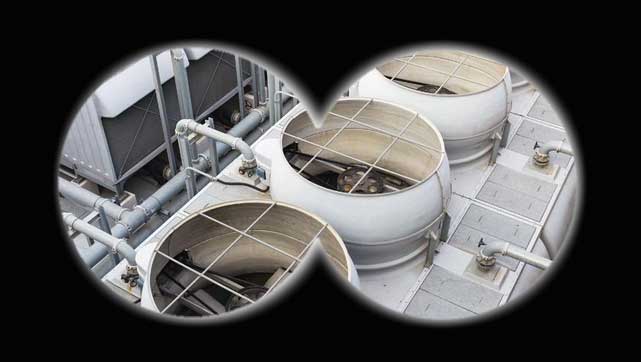Tower Monitoring

Installing sub-meters to capture evaporation credits can provide tools for effective cooling tower water flow monitoring. Many towers may be physically checked or inspected once a month or quarterly. But tower overflows often occur within the tower itself and may be hard to see or hear. A monitored sub-meter on the tower makeup line can provide an effective method to monitor one of the largest water-consuming devices in the building.
RPM Consulting uses utility-grade water meters with encoded registers and cellular transmitters to remotely monitor cooling towers across the country. Hourly readings are captured and transmitted daily and are reviewed by our staff. Unusual volumes are reported to our clients via email or phone allowing them to dispatch technicians or contact building engineers to quickly inspect and troubleshoot. The most common issues found include broken floats, stuck fill valves, and bad blow-down solenoid valves.
Recent issues discovered through monitoring include:
- Houston TX – no blow-down volume
- Sanford FL – cooling tower running 24 hours per day
- Miami FL – cooling tower leak/overflow (50 gal per hour)
- Corpus Christi TX – cooling tower leak/overflow (700 gal per hour)
- Tucson AZ – high makeup volume
- Alexandria LA – sudden increase in makeup volume
- Fort Worth TX – broken makeup line resulting from winter freeze
Remote tower water monitoring can be an inexpensive water conservation tool and can remotely supplement your building or contractor staff. Results are often reflected in reduced water and sewer bills and help prevent wasted water that could go unnoticed for days if not months. In cities where sewer credits are allowed, savings can be compounded through tower monitoring by preventing consumption of water due to equipment malfunctions. In buildings where sewer credits are not offered, savings will include a reduction in wasted water costs along with a reduction in sewer charges on that volume.
Tower metering and monitoring is also recommended by the U.S. Federal Energy Management Program, Best Management Practice #10: Cooling Tower Management – see link below for more details.
https://www.energy.gov/eere/femp/best-management-practice-10-cooling-tower-management